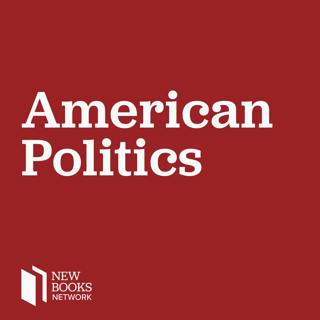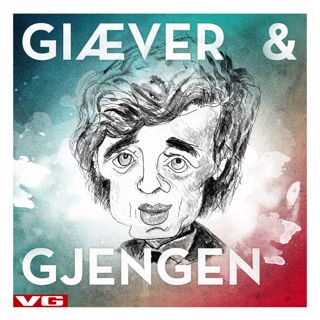
Deana A. Rohlinger, “Abortion Politics, Mass Media, and Social Movements in America” (Cambridge UP, 2015)
Deana A. Rohlinger has just written Abortion Politics, Mass Media, and Social Movements in America (Cambridge University Press, 2015). Rohlinger is associate professor of sociology at Florida State University. In the last several weeks, the podcast has featured a variety of political scientists who study interest groups and social movements. This week, Deana Rohlinger brings her perspective as a sociologist to the subject. She examines the way four policy organizations with an interest in abortion policy (National Right to Life Committee, National Organization of Women, Planned Parenthood Federation, and Concerned Women for America) interact with the media. Rohlinger finds quite different strategies for how to court the media, but also in how each organization responds to crises. She uses interviews with organizational leaders to deepen what we know about how social movements and interest groups employ a media strategy. Learn more about your ad choices. Visit megaphone.fm/adchoices
16 Feb 201517min

Thomas F. Schaller, “The Stronghold: How Republicans Captured Congress but Surrendered the White House” (Yale UP, 2015)
Thomas F. Schaller is the author of The Stronghold: How Republicans Captured Congress but Surrendered the White House (Yale University Press, 2015). Schaller is professor of political science at the University of Maryland, Baltimore County. With a new Congress up and running, Republican control of Capitol Hill is back. But has the Republican Party sacrificed presidential aspirations as it pursues a strategy to control Congress? That’s the subject and thesis of Schaller’s new book. He traces the political history of the GOP from 1989 through the 2000s, as the party develops a new political strategy in Washington. Schaller’s original interviews with key Republican leaders shapes his narrative of retrenchment over the last 25 years, highlighting the two Bush presidencies, the Contract with America, and the emergence of a new cadre of conservative Republican leaders. Learn more about your ad choices. Visit megaphone.fm/adchoices
29 Jan 201522min

Frank R. Baumgartner and Bryan D. Jones, “The Politics of Information: Problem Definition and the Course of Public Policy in America ( U Chicago Press, 2014)
Frank R. Baumgartner and Bryan D. Jones are the authors of The Politics of Information: Problem Definition and the Course of Public Policy in America (University of Chicago Press, 2014). Baumgartner is the Richard J. Richardson Distinguished Professor of Political Science at The University of North Carolina at Chapel Hill, Chapel Hill and Jones is the J. J. “Jake” Pickle Regents Chair in Congressional Studies and Professor of Government at the University of Texas at Austin. The Politics of Information picks up where the authors’ last book, The Politics of Attention, leaves off. They explore how information enters into the policy process and how that has evolved over time, focusing on what they call the “paradox of search”. They make extensive use of the publicly available data that they have collected over the last decade called the Policy Agendas Project. They argue that: “Information determines priorities, and priorities determine action” (p. 40). They discover is that the policy process is replete with information – not all high quality – and that different policy problems integrate information in different ways. They also find that the government has “broadened” – addressing an ever growing array of issues – rather than just “thickening” – through growth in the overall size of government. Learn more about your ad choices. Visit megaphone.fm/adchoices
19 Jan 201521min

Michael Heaney and Fabio Rojas, “Party in the Street: The Antiwar Movement and the Democratic Party after 9/11” (Cambridge UP, 2014)
Michael Heaney and Fabio Rojas are the authors of Party in the Street: The Antiwar Movement and the Democratic Party after 9/11 (Cambridge University Press 2015). Heaney is assistant professor organizational studies and political science at the University of Michigan, Ann Arbor, and Rojas is associate professor of sociology at Indiana University, Bloomington. Heaney and Rojas take on the interdisciplinary challenge at the heart of studies of political parties and social movements, two related subjects that political scientists and sociologists have tended to examine separately from one another. What results is a needed effort to synthesize the two social science traditions and advance a common interest in studying how people come together to influence policy outcomes. The particular focus of this work is on how the antiwar movement that grew in the mid-2000s interacted with the Democratic Party. They ponder a paradox of activism that just as activists are most successful – in this case supporting a new Democrat controlled House and Senate in 2006 – the energy and dynamism of the movement often fades away. Heaney and Rojas look to the relationship between antiwar activists and the Democratic Party for answers. They find that in a highly polarized partisan environment, party affiliations come first and social movement affiliations second, thereby slowing the momentum movements generate in their ascendency. Learn more about your ad choices. Visit megaphone.fm/adchoices
7 Jan 201522min

Daniel O. Prosterman, “Defining Democracy: Electoral Reform and the Struggle for Power in New York City” (Oxford UP, 2013)
Daniel Prosterman‘s new book Defining Democracy:Electoral Reform and the Struggle for Power in New York City (Oxford University Press, 2013) investigates a neglected topic in U.S. history: the occasional efforts by reformers over the years to bring proportional representation to America. No democracy in the world today is less representative by the standard of “one person, one vote.” (In 2000, three states with more than a quarter of the population, had just six Senators, for example. The seventeen least populous states, with seven percent of the population, had thirty-four.) This is actually an improvement over the past, when various mal-apportionment schemes essentially disenfranchised huge numbers of voters in virtually every state. Prosterman’s book does not look at the national scene, but takes us instead through New York City’s brief experiment with a quirky form “STV” (single transferable vote), the standard in most democracies. Like so many imported European reforms in the early 1900’s, the American version had a fraught experience. But as Prosterman painstakingly details it also invigorated the electoral system in New York, opening the field to an unusually diverse set of candidates for the time: women, blacks, even Communists. To the horror of even formerly sympathetic reformers, like Al Smith. In the end, an equally strange pack of bedfellows conspired to destroy the practice, which locals had voted for overwhelmingly. Yet, for all its flaws and historical particularities, the experiment stands as a useful reminder that democracy is now just about who votes, but how that vote is counted. Learn more about your ad choices. Visit megaphone.fm/adchoices
20 Des 20141h 1min

Brian Purnell, “Fighting Jim Crow in the County of Kings” (UP of Kentucky, 2014)
Scholars interested in the history of the civil rights movement in the North will definitely be interested in Brian Purnell‘s new book, Fighting Jim Crow in the County of Kings:The Congress of Racial Equality in Brooklyn (University Press of Kentucky, 2014). Thiscase study of the Congress of Racial Equality (CORE) in Brooklyn joins one of the fastest-growing areas of research in the field: the roots and experience of the black freedom struggle above the Mason-Dixon. Challenging many of the nation’s persistent beliefs about the geographic timeline and ideological dynamics of that social movement, this literature has broadened our understanding of the past and given us a far more complicated view of the challenges facing grassroots organizations in the years before, during, and following the “classical period,” stretching from Rosa Parks’s arrest to Martin Luther King’s dream. Purnell looks at one of CORE’s most active, aggressive chapters in the North between 1960 and 1965. An exemplar of social history, the book explores the difficulties facing a small organization trying to upset the racial status quo in a city that prided itself on colorblindness–pioneering much of the legislation adopted by the federal government later–despite the fact that in education, housing, and labor segregation prevailed. Aggravating matters were a number of seismic changes in New York, as elsewhere: the flight of industry and middle class taxpayers to the suburbs and Sunbelt, and the influx of millions of laid-off southern sharecroppers to neighborhoods that, because of “de facto” Jim Crow, became increasingly poor,overcrowded, dilapidated, and ridden with trash, crime, and despair. Purnell gives us the story of a group valiantly attempting to avert and assuage these overwhelming developments. As he notes, their failures speak to the reality many still face today. Learn more about your ad choices. Visit megaphone.fm/adchoices
25 Nov 20141h 2min

Steven Conn, “Americans Against the City: Anti-Urbanism in the Twentieth Century” (Oxford UP, 2014)
Americans have a paradoxical relationship with cities, Steven Conn argues in his new book,Americans Against the City: Anti-Urbanism in the Twentieth Century (Oxford University Press, 2014). Nearly three-quarters of the population lives near an urban center, the result of a centuries-old, global trend that reflects not just industrialization but the role cities have played as engines of economic, social, cultural, intellectual, and political life. Yet two-thirds of this “metropolitan” demographic–half the nation–chooses to reside in the suburbs, and over the years a remarkably consistent and low number of people have said they would prefer to live in a city. This may just reflect circumstance, the outcome of policies that, historians know, were not smartly, and often undemocratically, imposed. But as Morton White recounted decades ago, the intellectuals of the past have been just as anti-urban as politicians. Despite the outsized importance of the seaboard port-cities to the War for Independence, the founders left a Constitution that divided power geographically, not numerically, ensuring that cities would be forever underrepresented. Jefferson expressed the feeling of many early republicans that we could only maintain our virtue and freedom by remaining a nation of small yeoman, even while doubling the country’s size and guaranteeing its commercial development. Henry David Thoreau, writing in a more democratic age, told readers to go to “the woods” to find individuality–from a cabin one mile outside Concord. This anti-urban tradition was briefly interrupted in the late 1800’s, when, as Conn writes, for the first time the problems of the city became the problems of the nation. Many Progressives advocated European-style planning to meet the challenges for which cities were infrastructurally unprepared and often governmentally powerless to resolve. But as Conn writes, many thinkers also continued to see the city itself as the problem, and saw the solution as decentralization: dispersing population and industry. During the interwar period, the car, and electricity, stepped in to meet their needs, and when the Great Depression hit, FDR and the New Dealers fell back on this generation of thought, coming forward with a battery of programs that would unravel the city–and the famous coalition he built. Indeed, while the anti-urban tradition has often been the vehicle for an illiberal free-market political agenda, Conn shows that it has covered the ideological spectrum. The postwar Right in the Sunbelt helped speed the decline of the industrial belt in the North by advertising its bourgeoning megalopolises as the antithesis of the urban: free of high-rises, zoning, civil rights protestors, unions, and government in general, even while it relied on billions in federal tax dollars, saw high rates in crime, and increasingly had to reverse itself and create basic municipal services. But the anti-urban sentiment cut across the aisle, from the enthusiasm of postwar liberals for “urban renewal” and highways to the hippies’ revival of the back-to-the-land fantasy and the flowering of 1990’s communitarianism. The nation’s anti-urban policies remain, as does the bipartisan impulse, which makes this book’s subject as relevant as ever. Perhaps, as Conn says, in this era of hip gentrification, when the children of the suburbs are returning to cities, the “new urbanists” will break internationally odd pattern. But they will have to grapple with the multidimensional legacy of the nation’s anti-urban past. And Conn’s intellectual and cultural history, the first of its kind, will be the place to start. Learn more about your ad choices. Visit megaphone.fm/adchoices
12 Nov 201455min

Brian Arbour, “Candidate-Centered Campaigns: Political Messages, Winning Personalities, and Personal Appeals” (Palgrave-MacMillan 2014)
As campaign season ends, what can we make of all those ads? Brian Arbour is the author of Candidate-Centered Campaigns: Political Messages, Winning Personalities, and Personal Appeals (Palgrave-MacMillan 2014). Arbour is assistant professor of political science at John Jay College, City University of New York. Why do certain candidates focus on making campaign promises and extolling their legislative record, while others just talk about themselves? Arbour argues that scholars have underplayed the personal narratives that feature so prominently in much campaign advertising. As a result, candidate-centered appeals for votes have been largely ignored or misunderstood. Arbour aims to address this deficit with his new book that examines the way candidates talk about their own background and the background of opponents. He argues that candidate-centered campaigns build trust with voters as one would with neighbors or new co-workers. Learn more about your ad choices. Visit megaphone.fm/adchoices
3 Nov 201419min





















